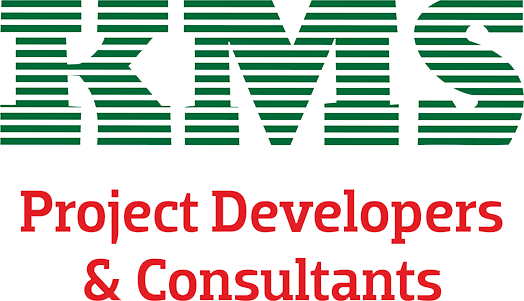We are involved in various Gold Standard projects across the World as a Consultant and Developer.
In general the GS project development and monetization process cycle consists of the following steps:
-
- Review of the project activity and preparation of strategy
- Decide whether to register the project as a single standalone GS Project Activity (GS-PA) or as a GS Programme of Activities (GS-PoA) where multiple project instances can be included in the PoA at a later stage.
- Preparation of Project Idea Note
- Intense discussions between project owner and us to solidify the approach to be followed to accomplish the task of monetization of the carbon and environmental attributes. At this time generally the crediting period to go for is decided. For GS PA / PoA the crediting period is either for 5 years renewed once so that the total project crediting period is 10 years. Every time, at the time of crediting period renewal the base line has to be reassessed and applied accordingly. Generally during these discussions the applicable approved GS /CDM methodology to be used should have been decided. In case it is found that there is no approved technical methodology which is applicable as per the existing or proposed project activity then a new methodology is to be written and get it approved from the Gold Standard Secretariat. It may be possible that along with the new methodology approval application we may submit the project for the Validation also. List of approved GS impact quantification methodologies based on technical sector and scale of projects are available here
- Appointment of GS VVB. As per the approved methodology “Project Document” or “Project Document + Monitoring Report and “Annual Report” shall be prepared as may be applicable from case to case. By this time local stake holder consultation must have been completed and recorded the details as appropriate in the project documents. Submission to GS for preliminary review and listing is a requirement for Project Design certification. Subsequent submission of project documents to GS VVB along with GS feedback is necessary to start the Design Certification.
- Obtaining Host Country Approval letter is not necessary for GS projects.
- GS VVB issues the audit findings after conducting the project onsite audit.
- Audit findings are replied with relevant evidences and there after GS VVB may close all CAR’s and CL’s and issues the Final Validation Report to Project owner. Alternatively GS VVB may issue a negative opinion.
- Once the project documents are uploaded in the Registry system, GS may select the project for review. If the project is selected for review by GS, VVB along with the Project owner shall reply to GS findings and close all the GS findings satisfactorily.
- Once GS clears the project then it is registered with GS. GS rejection of the registration request is also a possibility.
- Adding of GS Programme Activity/ies (VPA/s) to the GS PoA after due audit by the GS VVB. GS rejection of the VPA addition request is also a possibility.
- One can go for only GS PA / GS PoA validation or validation + verification as may be necessary depending on the project circumstances and preference.
- If necessary GS labelling is done for CDM registered projects along with the above mentioned steps.
PROJECT POST REGISTRATION STEPS IF THE PROJECT IS ONLY VALIDATED AT THE FIRST ATTEMPT
- The number of Performance Certifications in a 5 year certification cycle is not limited although it must take place at least once, no later than two years after Project implementation or Design Certification, whichever is later. In case of Design Certification Renewal, it must take place no later than two years after initial Design Certification.
- The maximum number of Design Certification Renewals and whether a certain number or automatic or reduced in scope is governed by individual Activity Requirements and/or Product Requirements. In the absence of any such stated Requirement, a Project is limited to one Renewal (i.e. maximum 10 years Certification)
- Monitoring the project activity as per the registered Monitoring Plan described in the project registration documentation either for the project activity or grouped activity.
- Preparation of Performance Certification for project activity or grouped activity.
- Hiring of GS VVB for conducting the Verification and Certification of VER’s.
- Submission of the relevant Monitoring Report/s to the appointed GS VVB.
- After due review of submitted documentation, conducting of onsite field visit by the appointed GS VVB to check the operation and monitoring of the project activity.
- Issue of Verification audit findings by the appointed GS VVB.
- Audit findings are replied with evidences and GS VVB closes all CAR’s and CL’s and issues the Final Verification Report to Client. Alternatively VVB may issue a negative opinion.
- Once the project verification reports and deed are uploaded in the Registry system, GS may select the project for review. If the project is selected for review by GS, VVB along with the Project owner shall reply to GS findings and close all the GS findings satisfactorily. Rejection of issuance request by GS is also a possibility.
- Once GS clears the project then it is ready for issuance of VER’s.
- Sale of credits based on a forward or spot contract to a VER buyer.
- If necessary and appropriate, changes to the Project or grouped project documentation can be made by a formal process during Verification through a VVB
- Project earns VER’s as long as the crediting period is active and verification is successful with GS regime process. In case the project has become inactive and no more operational for any reasons what so ever, VER’s cannot be issued since VER’s are issued only on the basis of the actual project operation as per the registered and active GS project documentation.
- If GS labelling of CDM projects is done, then above process steps are applicable for verification and the verification period to be parallel with the CDM verification period.
- In case of GS PA / GS PoA, validation can be combined with first verification. Hence the option exists to verify the old vintages during the first verification conducted along with the initial validation as per the GS rules.
For further details and process steps visit the relevant GS page here.
It may be possible as per the applicable regime specific rules, to shift a GHG project from other regime to GS, to continue earning the emission reduction certificates. Speak to our experts today to understand more on the applicable scenarios and opportunity.
Possible business engagement models with us include:
- Pure consulting engagement based on task wise deliverables with fixed fees payable at pre-determined process stages. In general it is called as fixed fee model.
- A consulting model based on task wise deliverables with professional fees payable as a percentage of the emission reductions, VER’s that are going to be certified. In general it is called as success fee model.
- A consulting model which is a hybrid of the above mentioned model 1 and model 2. A combination of fixed fees and success fees as a percentage of the emission reductions certified. In general it is called as fixed cum success fee model.
- An ERPA (Emission Reduction Purchase Agreement) model wherein we offer you a price for the credits, we prepare documentation and pay the validation and verification cost of the project.
Based on the project characteristics, market conditions and other relevant parameters, KMS may or may not offer one of the models above described.
Contact us today to receive best in class technical and project development services. Let’s start the discussion to responsibly and effectively monetize your carbon and environmental attributes.
Please contact us for Gold Standard project references.
TRANSITION REQUIREMENTS FOR OTHER PROJECTS TO TRANSITION TO GOLD STANDARD
- Eligible project/CPA registered with other schemes that have a crediting period start date with original carbon crediting scheme on or after 01 January 2016 are allowed to transition to Gold Standard for the Global Goals. 1.1.2
- Eligible project/CPA registered with other schemes that have a crediting period start date with original carbon crediting scheme before 01 January 2016 shall demonstrate, at the time of preliminary review; that project faces a serious risk of discontinuation without carbon revenue. how the project has been operational in the absence of carbon revenue, if carbon credits have not been issued to the project in recent years These projects shall be assessed on a case-by-case basis.
- STEPS FOR TRANSITION
- Initiate a request for transition by submitting a Transition Request Form
- Follow the project cycle procedure as provided in the relevant Requirements. Please refer to Transition Request Formfor different options available to expedite the certification procedure.
GSCERs to GSVERs conversion procedure
For CDM projects that are also certified to Gold Standard for the Global Goals, projects can convert issued Gold Standard labelled CERs to GSVERs, by following these steps:
- Submit a Transition Request Form
- Follow project cycle procedure as provided in the relevant requirements
- Transfer the issued CERs to the Gold Standard Swiss CDM Registry Account.
- Gold Standard retires the transferred CERs
- Project developer pays the relevant fee
- Gold Standard issues an equivalent number of GSVERs to the project in the Impact Registry


Add Comment